1. The Cadillac Ranch – Amarillo, Texas
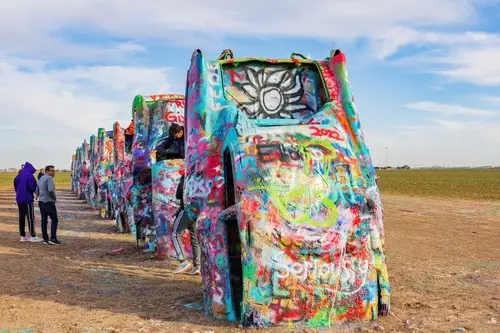
Another Amarillo legend, the Cadillac Ranch is a famous installation of half-buried Cadillacs in a Texas field, with people encouraged to spray-paint the cars. This unique art installation has been a roadside attraction since 1974, embodying the countercultural spirit of the 1960s and 70s. However, its popularity has started to wane as the allure of spray-painting deteriorates and younger generations have fewer connections to the cars, according to Southwest Contemporary. As an art installation in a rural area, it faces the challenge of maintaining relevancy in a world of Instagram-ready, high-tech installations.
What’s special about Cadillac Ranch is its open-endedness – anyone can leave their mark on the cars, creating a temporary, ever-changing work of art. Over time, though, it’s become harder to sustain the novelty for new generations who have more options for entertainment. As the world of digital art, virtual experiences, and organized attractions gains more traction, roadside spots like Cadillac Ranch may lose out on attention. If you’re into nostalgia or offbeat art, though, this one’s a must-see before it fades into history.
2. The Giant Ball of Twine – Cawker City, Kansas
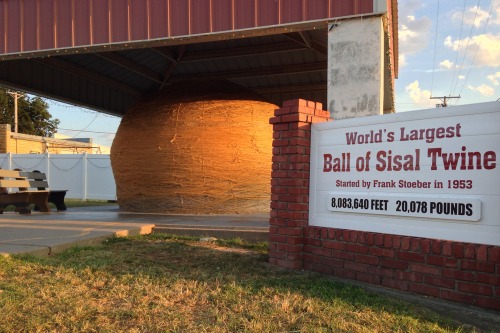
This quirky roadside attraction started as a personal project in 1953 when Frank Stoeber began rolling twine into a massive ball, NPR shares. Over the years, it grew into a tourist magnet, with visitors adding their own pieces of twine to the ever-growing orb. The tradition has continued, but interest has waned, and the ball’s future is uncertain as smaller towns see fewer tourists. While still a fun pit stop for road trippers, it’s not as much of a draw as it once was, especially with modern attractions taking center stage.
The Giant Ball of Twine represents the quirky side of Americana, which may be disappearing with the rise of chain attractions. Though the town of Cawker City still celebrates its beloved landmark, the ball might eventually lose its place as a cultural icon. As fewer people visit these small towns, many like Cawker City are grappling with how to keep these one-of-a-kind stops relevant. Still, if you’re ever in the area, it’s a fun, nostalgic experience worth checking out.
3. The Carhenge – Alliance, Nebraska
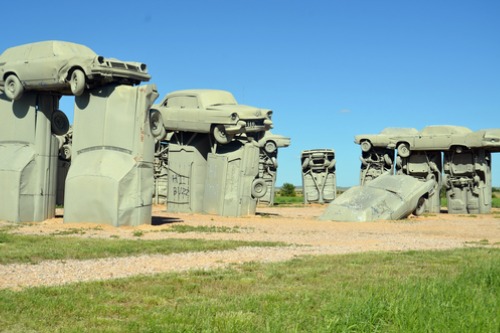
This offbeat replica of England’s Stonehenge made entirely out of vintage cars is the creation of artist Jim Reinders, who started it in 1987, the Carhenge site explains. It stands as a testament to artistic expression and Nebraska’s quirky roadside appeal, attracting fans of both art and unusual roadside stops. However, Carhenge faces the threat of being overshadowed by newer, more easily accessible art attractions that cater to larger crowds. The once-prominent site is now struggling with funding and preservation efforts, which could lead to its eventual demise.
What makes Carhenge so compelling is its celebration of the automotive culture and the blending of historical architecture with industrial materials. For years, it was a must-see for those traveling through the Nebraska plains, but its future now depends on local investment and creative thinking. With the rise of interstate highways and the speed of modern travel, many travelers pass by without taking the time to stop and appreciate this quirky monument. If you’re in the area, it’s definitely worth a detour, but don’t expect it to be around forever unless there’s a renewed commitment to its preservation.
4. The Mystery Spot – Santa Cruz, California

A strange and curious place that’s been baffling visitors since the 1940s, the Mystery Spot is a gravity-defying attraction where the laws of physics seem to be turned on their heads, as you can read on their website. Visitors claim to experience odd sensations, such as feeling tilted while standing straight or objects rolling uphill. However, as people’s interest in supernatural and mystery-based sites wanes, the Mystery Spot is finding it harder to compete with more contemporary entertainment options. Despite its long history, its crowds are shrinking, and it faces the challenge of maintaining its appeal.
The charm of the Mystery Spot lies in its ability to spark curiosity and a sense of wonder, but its allure may be losing its grip as newer attractions take the spotlight. The place has always been a bit of a mystery itself, with some calling it a hoax and others embracing the illusion. It holds a place in the hearts of those who remember it as a staple of their road trips. However, without a solid refresh or modernization, it might not last much longer.
5. The World’s Largest Prairie Dog – Cottonwood, Kansas
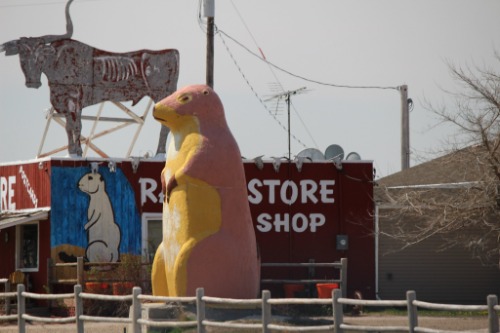
Standing 30 feet tall, this giant prairie dog has been a beloved roadside attraction for decades, according to Atlas Obscura. Originally built in 1980 as part of a tourism initiative, it once drew travelers passing through the Great Plains. However, as small-town attractions like this one lose out to larger, more commercialized destinations, the prairie dog is becoming less of a must-see. Cottonwood’s tourism department is struggling to keep the attraction relevant as the roadside stop falls off the beaten path.
The giant prairie dog symbolizes the character of rural America and the unique roadside attractions that once flourished across the country. Unfortunately, such iconic figures are increasingly rare as more urbanized areas dominate the travel landscape. As fewer people stop to admire this nostalgic monument, the town faces the dilemma of how to keep the statue and its story alive. Without attention or reinvestment, this quirky landmark might fade into obscurity.
6. The Big Texan Steak Ranch – Amarillo, Texas
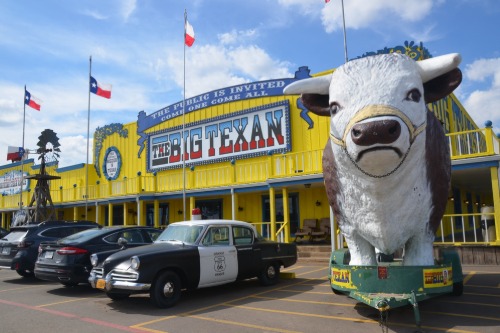
Home to the famous 72-ounce steak challenge, the Big Texan Steak Ranch has been a Texas staple for decades. It’s not just a place to eat; it’s an experience, with tourists coming from all over to attempt the challenge or simply enjoy a meal at this massive roadside restaurant. However, as the roadside dining experience becomes more homogenized and chains dominate, businesses like Big Texan face more competition. Despite its fame, it’s struggling with the changing nature of food tourism and increasingly mobile travelers.
The Big Texan has long been a symbol of Texas hospitality and the road trip culture of stopping at large, entertaining eateries. However, the rise of fast food and chain restaurants, as well as changing road trip patterns, means fewer visitors are making the trek to Amarillo for a steak challenge. Even though it’s still a fun stop for those who love quirky Americana, its future could be at risk if it doesn’t adapt to modern travel trends. It’s a piece of American road trip nostalgia, but will it last?
7. The Largest Ghost Town – Bodie, California
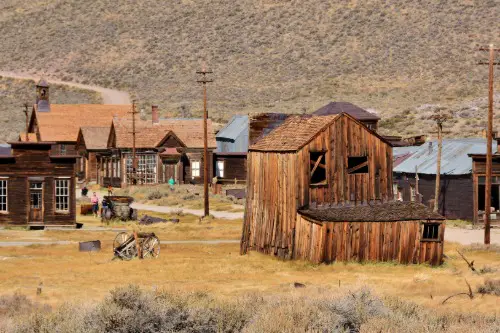
Bodie is a well-preserved ghost town that once boomed during the Gold Rush era and has remained largely intact since its abandonment in the late 19th century. Now a state park, the once-thriving town offers a glimpse into the past, with buildings frozen in time. Unfortunately, as tourism becomes more focused on flashy, high-tech experiences, places like Bodie are slowly falling out of favor. Additionally, preservation costs and a dwindling visitor base make it harder to maintain the site.
The eerie and mysterious nature of Bodie gives it an almost cinematic feel, a snapshot of history that’s preserved in decay. However, with fewer people taking the time to explore such remote historical sites, Bodie may face further neglect in the coming years. The remote location and lack of modern amenities discourage some potential visitors, limiting its ability to thrive in today’s fast-paced world. Still, it remains a must-see for those who appreciate history and want to experience a ghost town in its most authentic form.
8. The World’s Largest Rocking Chair – Casey, Illinois
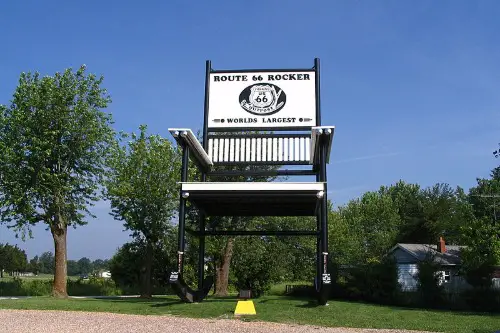
Standing 42 feet tall, this massive rocking chair is a prime example of kitsch Americana, attracting travelers for decades. Fo a long time it was a popular stop for those on the road, but with time, roadside attractions like this are becoming increasingly less of a draw. The novelty of a giant chair has worn off for many, and the rise of digital media has changed the way we engage with these quirky landmarks. It’s also becoming harder for such small, niche attractions to stay afloat without the large crowds that they once relied on.
What makes the World’s Largest Rocking Chair interesting is its sheer size and the idea that a seemingly mundane object has been turned into something larger-than-life. The attraction might be a favorite for those who love kitschy stops, but it’s likely to be passed over by younger generations who prefer interactive or tech-savvy experiences. Still, it represents a specific moment in time when roadside attractions were all about fun and nostalgia. If you want a picture with a giant rocking chair, now’s your chance before it fades into obscurity.
9. The Dinosaur Park – Rapid City, South Dakota

Dinosaur Park, with its towering concrete dinosaurs, has been standing proudly since 1936, offering visitors a chance to marvel at its life-sized replicas. It’s a classic example of mid-20th-century roadside attractions, embodying the fascination with prehistoric creatures. However, as the park becomes less of a novelty and modern dinosaur attractions—often with more interactive and immersive features—take over, it’s losing visitors. The site has struggled to find ways to update itself while keeping the old-school charm that made it popular.
The park is a relic of a time when roadside stops were often simple, kitschy fun, with tourists thrilled by big, static figures. Despite its rich history, Dinosaur Park faces stiff competition from modern, high-tech experiences that pull in younger audiences. Still, it holds a special place in the hearts of those who grew up visiting it and is worth a trip for anyone nostalgic for a piece of pre-digital Americana. But like many old-time attractions, its future is uncertain as it struggles to attract the same crowds it did in its heyday.
10. The World’s Largest Jukebox – Huntsville, Alabama

This 20-foot-tall jukebox in Huntsville, Alabama, once attracted visitors with its towering presence and nostalgic appeal. Built in 1983, it was a nod to the golden era of jukeboxes and quickly became a favorite roadside attraction for travelers passing through the area. However, as the cultural significance of traditional jukeboxes has faded, so too has the attention this giant structure once garnered. With the rise of digital music and streaming services, fewer people are taking the time to stop and marvel at this oversized tribute to mid-century Americana.
The jukebox represents a simpler time when music was enjoyed in a more physical and communal way, often in diners or music halls. Unfortunately, as tastes change and roadside attractions fall out of favor, sites like the World’s Largest Jukebox are at risk of being overlooked. As new, more interactive attractions emerge, small towns like Bessemer are finding it harder to keep these classic stops relevant. If you’re ever in the area, though, it’s a great place to snap a picture and reflect on the history of music and Americana before it becomes just a memory.


